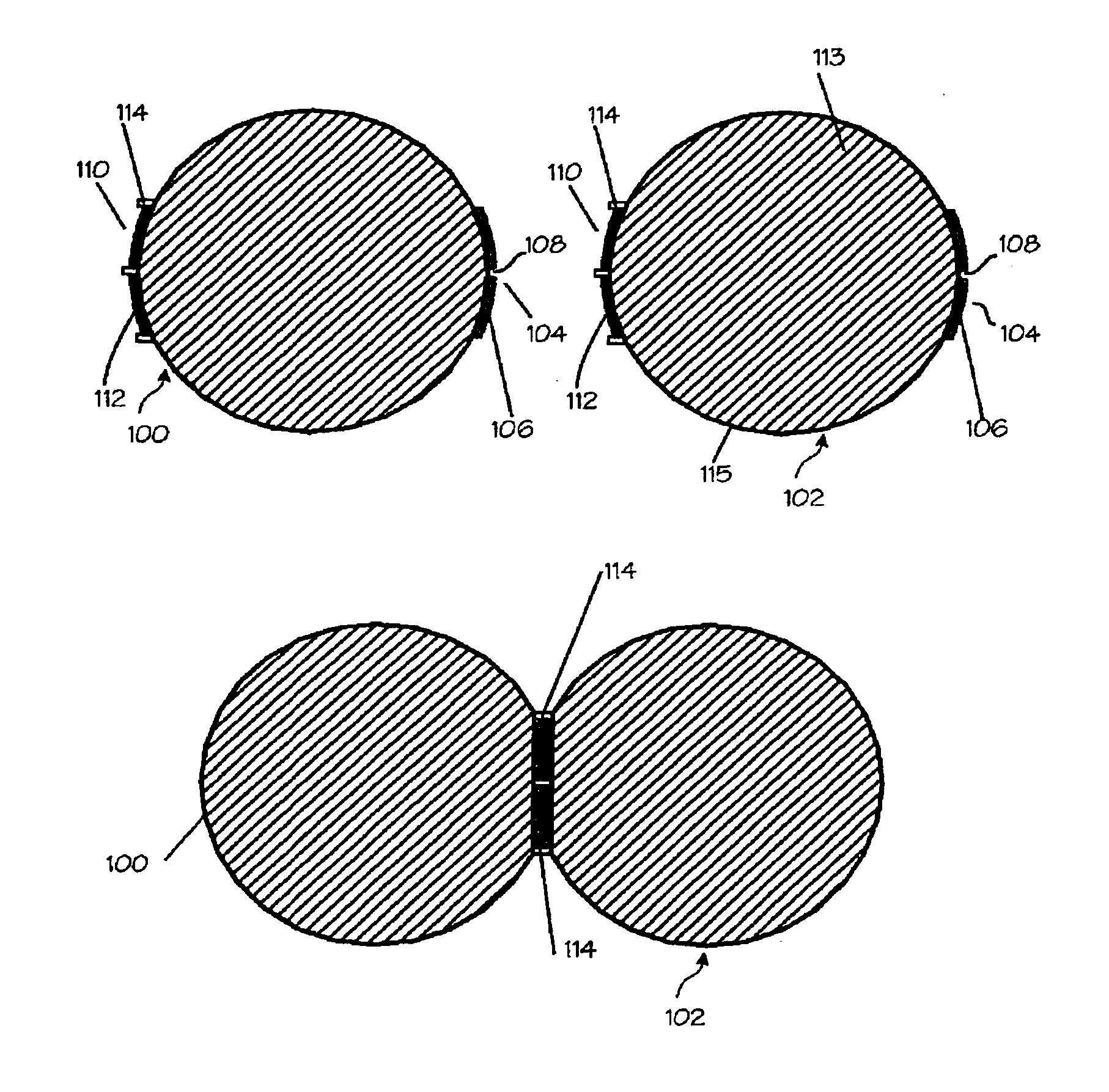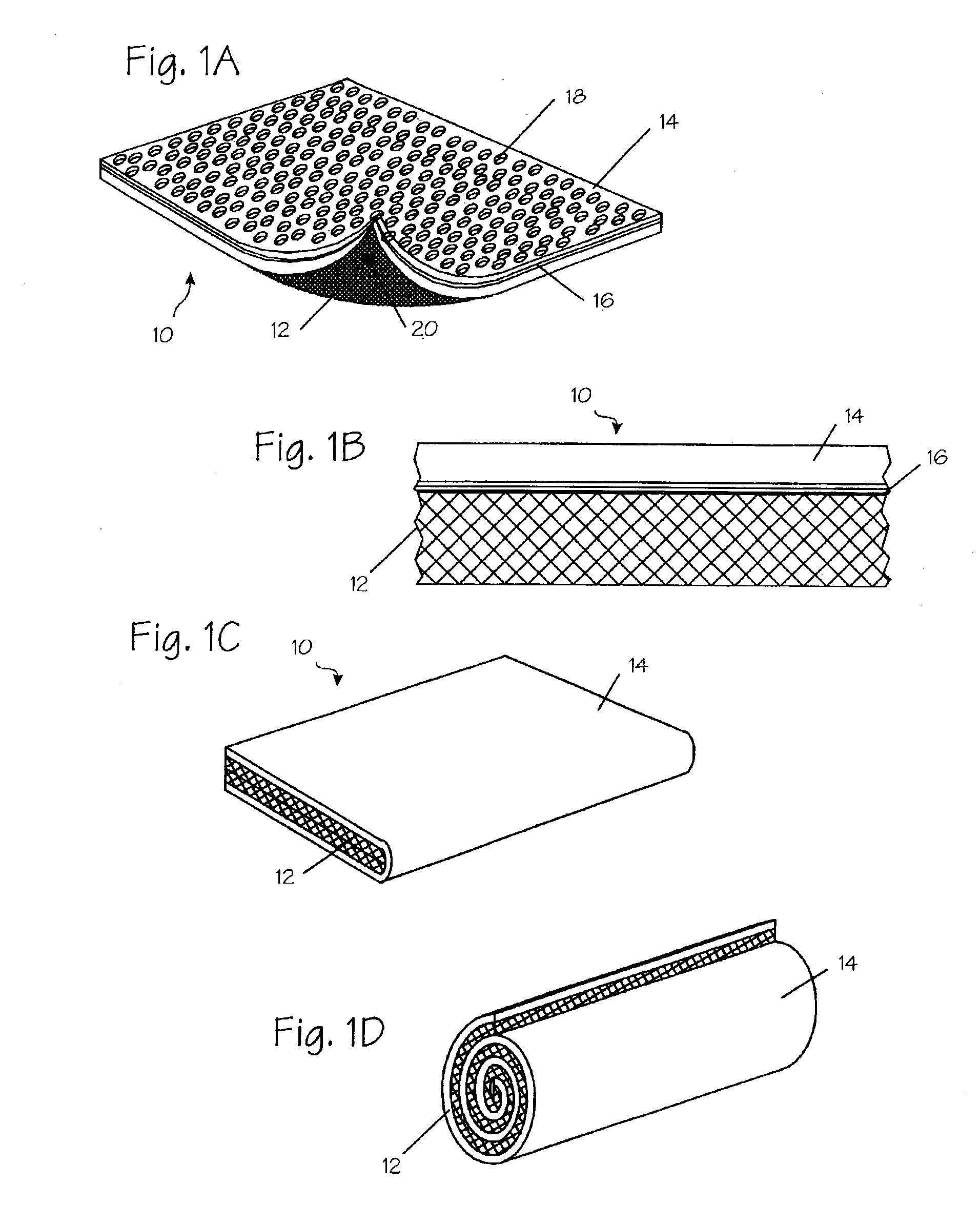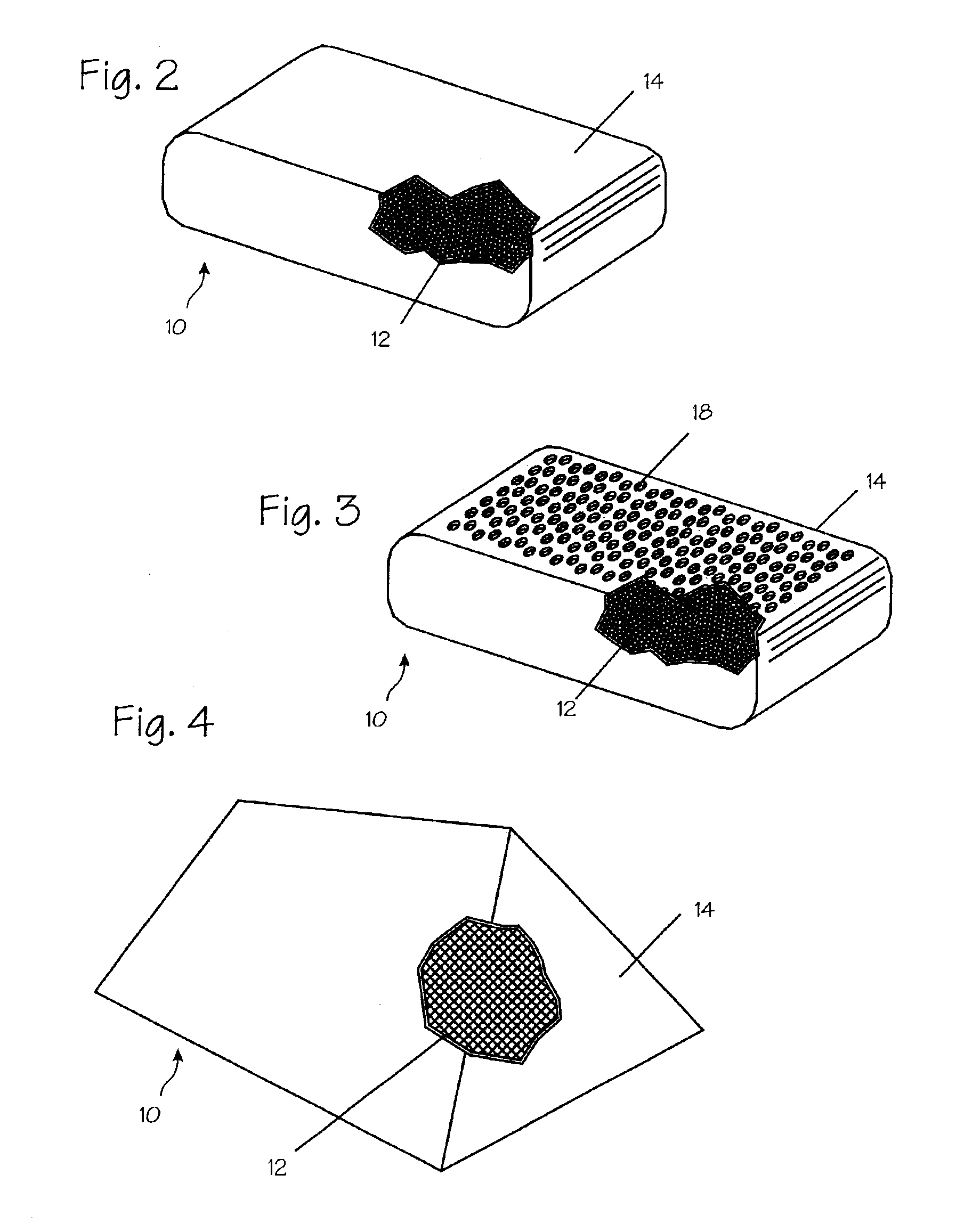Method and apparatus for improved hemostasis and damage control operations
a technology of hemostasis and damage control, applied in the field of wound care, can solve the problems of lack of intrinsic coagulation inducing properties, high blood clotting rate, and high cost, and achieve the effect of improving blood clotting ra
- Summary
- Abstract
- Description
- Claims
- Application Information
AI Technical Summary
Benefits of technology
Problems solved by technology
Method used
Image
Examples
Embodiment Construction
[0037]FIG. 1A illustrates a diagram of a two-sided hemostatic packing device 10 of the present invention. The two-sided packing device 10 comprises a blood permeable layer or substrate 12 and a fluid impermeable covering 14. The fluid impermeable sheet 14 further comprises an optional adhesive layer 16, and a plurality of optional indentations 18 on the exterior surface. The fluid impermeable covering 14 or the substrate 12 may optionally comprise a plurality of radiopaque markers 20. The hemostatic packing device 10 is a flat sheet that is flexible and deformable. The substrate 12 is a flat sheet configuration and is integral to or affixed to the fluid impermeable covering 14. The fluid impermeable covering 14 optionally comprises a plurality of indentations 18. The radiopaque markers 20 may be wire form, dots or patches of barium-impregnated fabrics.
[0038]The substrate 12 is soft in its wet or dry state and may be bent, molded or deformed to maximize surface contact and force dist...
PUM
 Login to View More
Login to View More Abstract
Description
Claims
Application Information
 Login to View More
Login to View More - R&D
- Intellectual Property
- Life Sciences
- Materials
- Tech Scout
- Unparalleled Data Quality
- Higher Quality Content
- 60% Fewer Hallucinations
Browse by: Latest US Patents, China's latest patents, Technical Efficacy Thesaurus, Application Domain, Technology Topic, Popular Technical Reports.
© 2025 PatSnap. All rights reserved.Legal|Privacy policy|Modern Slavery Act Transparency Statement|Sitemap|About US| Contact US: help@patsnap.com



